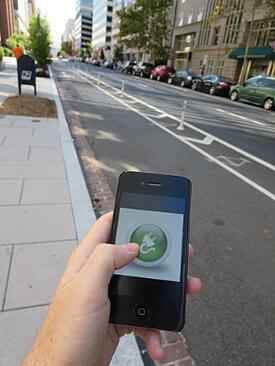 The “sharing economy.” It’s the new, new thing (or, depending on your perspective, very, very old). Over the past five years, companies like Uber and Airbnb have attracted millions of dollars of venture capital and built a huge customer base. “Just as peer-to-peer businesses like eBay allow anyone to become a retailer,” The Economist writes, “sharing sites let individuals act as an ad hoc taxi service, car-hire firm or boutique hotel as and when it suits them.” The ability to share goods and services is having a disruptive impact across the economy. Can energy be far behind?
The “sharing economy.” It’s the new, new thing (or, depending on your perspective, very, very old). Over the past five years, companies like Uber and Airbnb have attracted millions of dollars of venture capital and built a huge customer base. “Just as peer-to-peer businesses like eBay allow anyone to become a retailer,” The Economist writes, “sharing sites let individuals act as an ad hoc taxi service, car-hire firm or boutique hotel as and when it suits them.” The ability to share goods and services is having a disruptive impact across the economy. Can energy be far behind?
Since America electrified in the late 19th Century, the solution for energy growth has been to “get bigger,” Hemant Taneja, venture capitalist and AEE co-founder, wrote in Tech Crunch. Economies of scale allowed utilities to provide power to more customers and increase profitability for themselves. But, Taneja argues, “the industry is starting to reach the limits of scale.” Could “unscaling” the industry by aggregating users onto platforms for sharing, like Airbnb and Uber, be the future of electricity?
This week, the Rocky Mountain Institute published a blog post titled “An Airbnb or Uber for the Electricity Grid?” For more than a century, RMI writes, the nation’s grid has relied on centralized generation and one-way distribution to customers. But, as distributed energy resources become more available and affordable, we may be on the cusp of a shift toward a more democratic structure, where consumers hold the resources – advanced energy resources – and share them to meet each other’s needs.
“Energy efficiency, demand response, distributed generation such as rooftop solar, distributed storage such as batteries, smart thermostats, and more are poised to become the front lines of a sharing economy revolution for the grid,” RMI states.
Two major barriers stand in the way of Uber for kilowatt-hours. The first is supply. As Taneja points out, many of us “already have a car or an extra bedroom,” but spare generators are hard to come by. That is changing, as rooftop solar and small-scale wind become more prevalent. More distributed generation could inspire more ways to distribute that generation.
The second obstacle is the lack of a system that allows for sharing. A shared grid needs to be more nimble than today’s grid, which “can’t easily handle the diverse and intermittent energy sources that come from small-scale generators,” Taneja writes. But we are seeing movement on that front as well: Systems are being implemented across the country to allow for distribution of electricity generated everywhere from rooftops (with net metering of electricity taken from and provided to the grid) to community solar gardens.
Finally, a key component to the success of services like Airbnb and Uber is a trusted third party that can handle instant transactions. In energy, there’s no app for that…yet.
A shared electricity future is still that: the future. But it’s not necessarily so futuristic. A shared economy in energy is looking less like The Jetsons than something that’s just around the corner. Companies like Mosaic and SunShare already allow consumers to collaborate on solar installations within a community. I bet we’ll be ubering up kilowatt-hours before long – and before we get into a flying car.
Stay up-to-date with all advanced energy news and policy updates (and flying car announcements) by signing up for our weekly newsletter. Click below!
